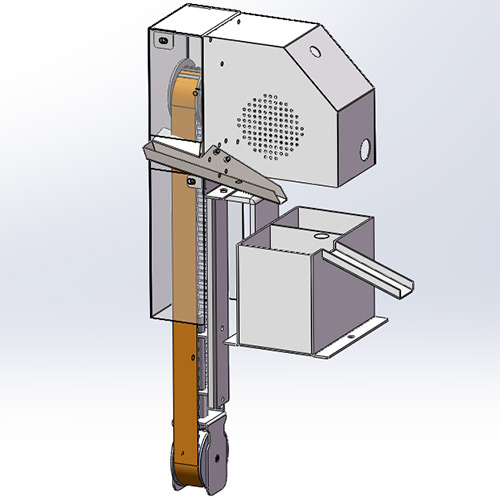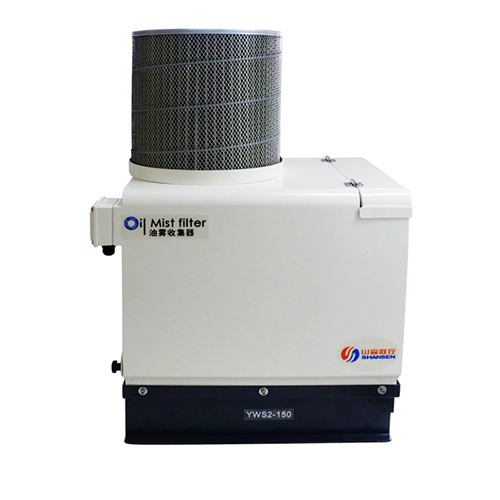-
WhatsAPP: +86 18706448138
-
Tengzhou, Shandong, China

The Ultimate Guide to Manual Pulse Generators
Learn how manual pulse generators work, their uses in electronics testing, and how to choose the right one for your needs.
Welcome to My Blog!
Before we dive into the content, if you’re interested in our products or have any questions, please feel free to visit our Contact Us page on the website. Our team is ready to assist you with inquiries, orders, or any support you may need.
Now, let’s get started on our journey together. I hope you find the content here insightful, engaging, and valuable.
Table of Contents
A manual pulse generator is a versatile tool used in electronics, engineering, and research to generate accurate, repeatable pulses for signal testing and circuit analysis. Whether you’re a student learning about signal processing or an engineer working on a complex project, understanding how to use and choose the right manual pulse generator is essential. In this guide, we’ll walk you through everything you need to know about manual pulse generators.
What is a Manual Pulse Generator?

Definition and Overview
A manual pulse generator is an electronic test instrument designed to generate precise electrical pulses. These pulses can vary in frequency, amplitude, and waveform, making them ideal for testing circuits, validating components, and analyzing system performance. Unlike electronic pulse generators, which can automate pulse generation, manual pulse generators require human intervention to set the parameters.
Key Components of a Manual Pulse Generator
Manual pulse generators typically consist of the following components:
- Control Interface: The part of the device where users set pulse frequency, duration, and amplitude.
- Pulse Output: The component responsible for producing the electrical pulses.
- Power Supply: Provides the necessary voltage for the operation of the generator.
- Display Panel: Some manual pulse generators include a digital display for easier control and monitoring.
How Manual Pulse Generators Differ from Electronic Pulse Generators
While both types of pulse generators are used for testing and diagnostics, the key difference lies in the control method. Manual pulse generators require manual adjustments of frequency, amplitude, and pulse width. On the other hand, electronic pulse generators offer automated control, often providing more precision and versatility, especially in high-volume testing environments.
How Does a Manual Pulse Generator Work?
Basic Functionality and Operation
The manual pulse generator creates pulses that are typically square waves, though some models can generate other waveforms like sine or triangle waves. Users manually adjust settings such as frequency (the number of pulses per second), amplitude (the height of the pulse), and pulse width (how long each pulse lasts). These settings are adjusted via physical dials or a control interface.
Generating Pulses: Frequency, Amplitude, and Duration
The frequency determines how often the pulse is generated per second (measured in Hertz, Hz). Amplitude defines the peak voltage of the pulse, affecting how strong the signal is. Pulse width dictates the duration for which the pulse remains active. Together, these parameters control the characteristics of the signal produced by the generator.
Common Uses in Electronics and Signal Testing
Manual pulse generators are essential in electronic testing, helping engineers simulate real-world scenarios to verify that circuits and devices behave as expected under different signal conditions. Common applications include:
- Signal integrity testing
- Component testing
- Oscilloscope calibration
Key Features to Look for in a Manual Pulse Generator

Frequency Range and Precision
The frequency range of a manual pulse generator is crucial because it determines the types of signals you can generate. For most general-purpose applications, a frequency range of 1 Hz to several MHz is sufficient, but specialized applications may require higher frequencies. Precision is equally important to ensure that the pulses generated are accurate for testing purposes.
Waveform Generation Capabilities
While basic manual pulse generators generate square waves, more advanced models can produce a variety of waveforms like sine waves, triangle waves, and custom waveforms. This versatility makes the generator suitable for a broader range of applications.
User Interface and Ease of Use
The interface should be intuitive, with clearly marked controls for adjusting frequency, amplitude, and other settings. Some generators feature digital displays for precise settings, making them easier to use, while others may rely on analog dials.
Durability and Build Quality
Manual pulse generators are often used in laboratories and industrial settings, so they need to be durable. High-quality construction ensures that the device can withstand repeated use in demanding environments.
Power Source and Portability
Consider whether the device requires an external power supply or if it operates on batteries. Portability is also important if you need to use the generator in the field or in various locations.
How to Use a Manual Pulse Generator for Circuit Testing
Connecting to a Circuit
To use the manual pulse generator for circuit testing, you connect the output terminal of the generator to the circuit you’re testing. This can be done with oscilloscope probes or directly to a circuit’s input.
Setting Up the Parameters for Testing
Once connected, set the frequency, amplitude, and pulse width to match the specifications required for your test. For example, when testing a microcontroller, you may want to set the pulse frequency to match the clock speed of the processor.
Interpreting the Output Signals
After setting the parameters, observe the output using an oscilloscope. The waveform on the oscilloscope will reveal the circuit’s response to the pulses generated by the manual pulse generator.
Troubleshooting Common Testing Issues
If the pulse output is not as expected, verify the settings on the pulse generator. Ensure that the amplitude and frequency are correctly set, and check for connection issues between the generator and the test circuit.
Manual Pulse Generators in Educational and Research Applications

Role in Teaching Electronics
Manual pulse generators are frequently used in electrical engineering education. They help students understand the fundamentals of signal processing and circuit analysis by allowing them to manipulate and test different types of signals.
Practical Experiments for Students
Students often use manual pulse generators in experiments designed to teach them how to generate specific waveforms, test circuit components, and understand signal behavior in response to various frequencies and amplitudes.
Research and Development Uses
In research, manual pulse generators are used to simulate various signal conditions when testing new technologies, circuit designs, and components.
Choosing the Best Manual Pulse Generator for Your Needs
Factors to Consider Before Buying
When purchasing a manual pulse generator, consider factors such as:
- Required frequency range
- Waveform generation needs
- Budget constraints
- Brand reputation
Price Range and Budget Considerations
The price of manual pulse generators varies depending on features and capabilities. Entry-level models start at around $100, while high-end models with advanced features can cost upwards of $1,000.
Top Brands and Suppliers of Manual Pulse Generators
Some well-known brands in the manual pulse generator market include:
- Tektronix
- Keysight Technologies
- Rigol
These companies are recognized for their high-quality, reliable products.
User Reviews and Testimonials
Before purchasing, it’s beneficial to check user reviews for insights on performance and durability. Reviews can help gauge how well a device meets its specifications and whether it is suitable for your specific needs.
Manual Pulse Generators vs. Electronic Pulse Generators
Key Differences and Advantages
Manual pulse generators are typically used for low-cost, low-frequency testing where human input is acceptable. In contrast, electronic pulse generators offer automated features that can generate more complex waveforms at higher speeds.
When to Choose a Manual Pulse Generator Over an Electronic One
Manual pulse generators are ideal for:
- Simple, hands-on testing
- Educational purposes
- Small-scale projects
Electronic pulse generators, however, are better suited for large-scale or high-speed testing needs where precision and automation are critical.
Common Issues and Troubleshooting for Manual Pulse Generators

Calibration Problems
If the pulse generator is not producing accurate signals, calibration may be required. Ensure that the device is properly calibrated according to the manufacturer’s guidelines.
Signal Output Issues
If the signal is distorted or not being output at all, check the connections and settings on the generator. Ensure that all components are correctly attached and the device is receiving power.
General Maintenance and Care Tips
To prolong the lifespan of your manual pulse generator, avoid dropping it, keep it clean, and ensure it is stored in a safe, dry place when not in use.
Ready to Enhance Your Testing Capabilities?
Discover the best manual pulse generators for your projects today! Whether you’re a student, engineer, or researcher, find the right tool to elevate your signal testing and circuit analysis. Shop now and take your work to the next level!
FAQ
What is a manual pulse generator?
A manual pulse generator is an electronic test instrument used to produce precise electrical pulses. These pulses can be adjusted in frequency, amplitude, and duration, making it ideal for testing circuits and validating components.
How does a manual pulse generator work?
It works by generating electrical pulses with adjustable settings such as frequency, amplitude, and pulse width. These parameters are manually controlled, allowing users to create various signal patterns for testing purposes.
What are the main uses of a manual pulse generator?
Manual pulse generators are commonly used in electronics testing, signal processing, and circuit analysis. They help test components, calibrate oscilloscopes, and generate waveforms for other test equipment.
How do I choose the right manual pulse generator?
Consider factors like frequency range, waveform generation capabilities, ease of use, and your specific testing needs. Compare different models and check reviews to find the best option for your budget and application.



